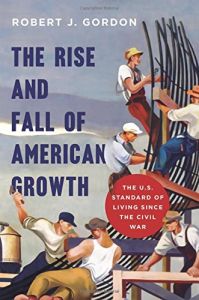Join getAbstract to access the summary!

Join getAbstract to access the summary!
Robert J. Gordon
The Rise and Fall of American Growth
The U.S. Standard of Living since the Civil War (The Princeton Economic History of the Western World)
Princeton UP, 2016
What's inside?
The US economy’s “special century” had extraordinary results.
Recommendation
In the early 21st century, the pace of US innovation remains hectic in communications, entertainment and information technology. Yet economic output per person is declining as Americans age, and income inequality, educational limitations and US government debt plague the economy. Current slow rates of growth in US labor productivity and economic output can’t compare with the rapid advancements the country enjoyed from 1870 to 1970. Economics professor Robert J. Gordon describes this “special century” – when the electric light, the internal combustion engine, indoor plumbing and the telephone changed virtually every aspect of daily life – in great color and detail, though he sets out to offer few policy prescriptions for improving growth today. getAbstract recommends Gordon’s well-researched statistical gold mine as a valuable economic history lesson for students, professors and investors.
Summary
About the Author
Robert J. Gordon is a professor at Northwestern University. His books include Productivity Growth, Inflation and Employment and Macroeconomics.




















Comment on this summary